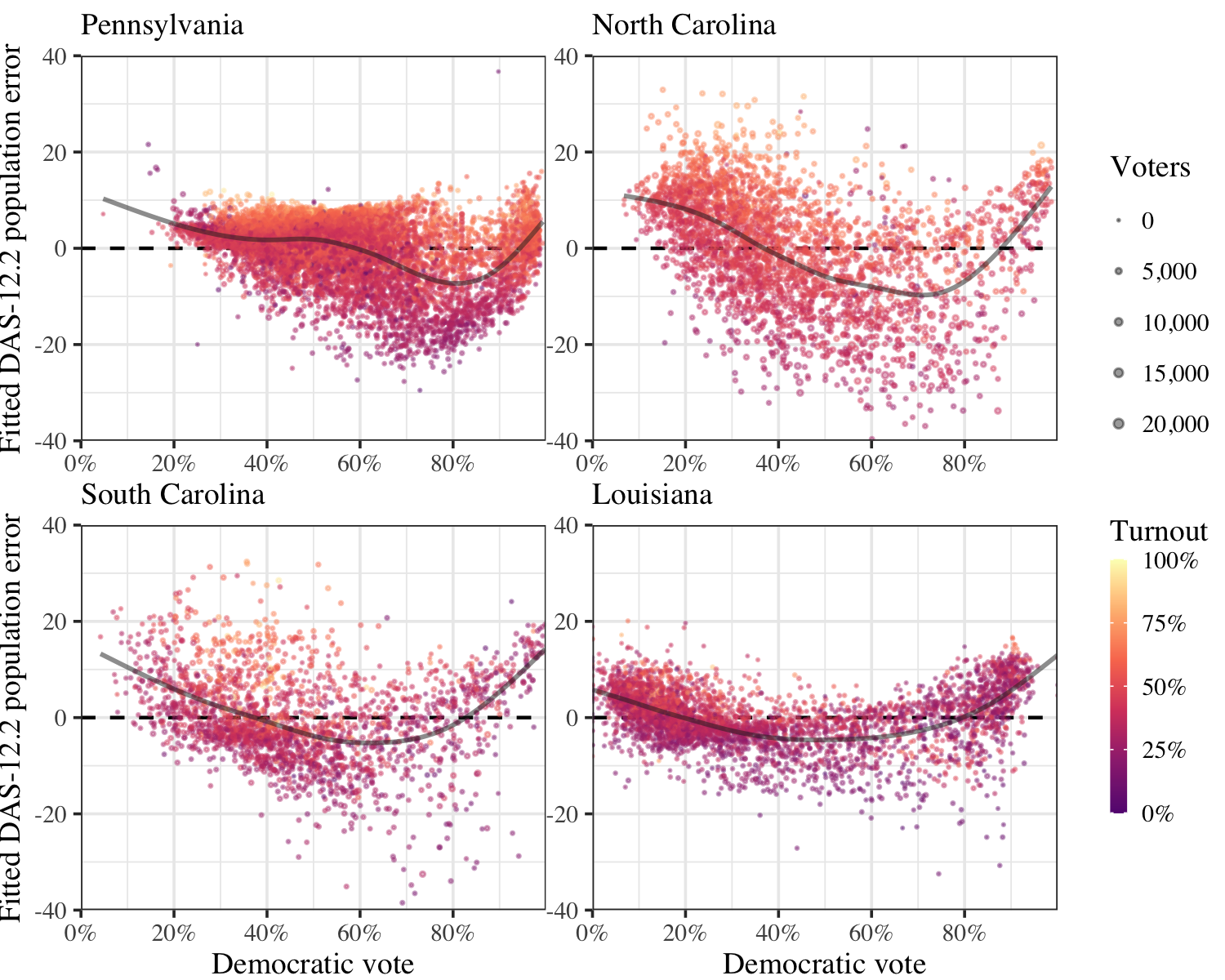Impact of the Census Disclosure Avoidance System on Redistricting
In attempting to protect the privacy of 2020 Census respondents, the Census Bureau has made its data unsuitable for redistricting purposes.
The U.S. Census Bureau plans to protect the privacy of 2020 Census respondents through its Disclosure Avoidance System (DAS), which attempts to achieve differential privacy guarantees by adding noise to the Census data. The Bureau has asked for feedback on the adequacy of DAS-protected data for real-world purposes. The ALARM project has conducted an extensive analysis into how the DAS-protected data affects redistricting and voting rights analyses, and has submitted these findings to the Census Bureau.
Read the report: The Impact of the U.S. Census Disclosure Avoidance System on Redistricting and Voting Rights Analysis
Also see: Answers to Frequently Asked Questions Added on June 2, 2021.

By applying redistricting simulation and analysis methods to DAS-protected 2010 Census data, we find that the protected data are not of sufficient quality for redistricting purposes. Compared to the original Census 2010 data, we find that the DAS-protected data:
Prevent map drawers from creating districts that satisfy the One Person, One Vote principle, according to current statutory and judicial standards. Actual deviations from equal population will generally be several times larger than as reported under the DAS data. The magnitude of this problem increases for smaller districts such as state legislative districts and school boards.
Transfer population from low-turnout, mixed-party areas to high-turnout, single-party areas. This differential bias leads to different district boundaries, which in turn implies significant and unpredictable differences in election results. The discrepancy also degrades the ability of analysts to reliably identify partisan gerrymanders.
Transfer population from racially mixed areas to racially segregated areas. This bias effectively means racially heterogeneous areas are under-counted. The degree of racial segregation can therefore be over-estimated, which can lead to a change in the number of majority-minority districts. It also creates significant precinct-level variability, which adds substantial unpredictability to whether or not a minority voter is included in a majority-minority district.
Alter individual-level race predictions constructed from voter names and addresses. This leads to fewer estimated minority voters and majority-minority districts in a re-analysis of a recent Voting Rights Act case, NAACP v. East Ramapo School District. At a statewide level, however, the DAS data does not curb the ability of algorithms to identify the race of voters from names and addresses. Therefore, this casts doubt on the universal privacy protection guarantee of DAS data.
Our primary recommendation is to release Census P.L. 94-171 data without using the Disclosure Avoidance System, and instead rely on a swapping method similar to that applied to the 2010 Census data in order to protect respondent privacy.
If the Census Bureau decides to apply the current DAS to Census PL. 94-171 Data, we recommend increasing the privacy loss budget and allocating the increase to improving redistricting outcomes. In particular, preserving the accuracy of populations at the voting tabulation district level would be critical. The Bureau must avoid injecting noise that systematically undercounts certain racial and partisan groups in the privacy-protected data. Additional recommendations are given in the paper.